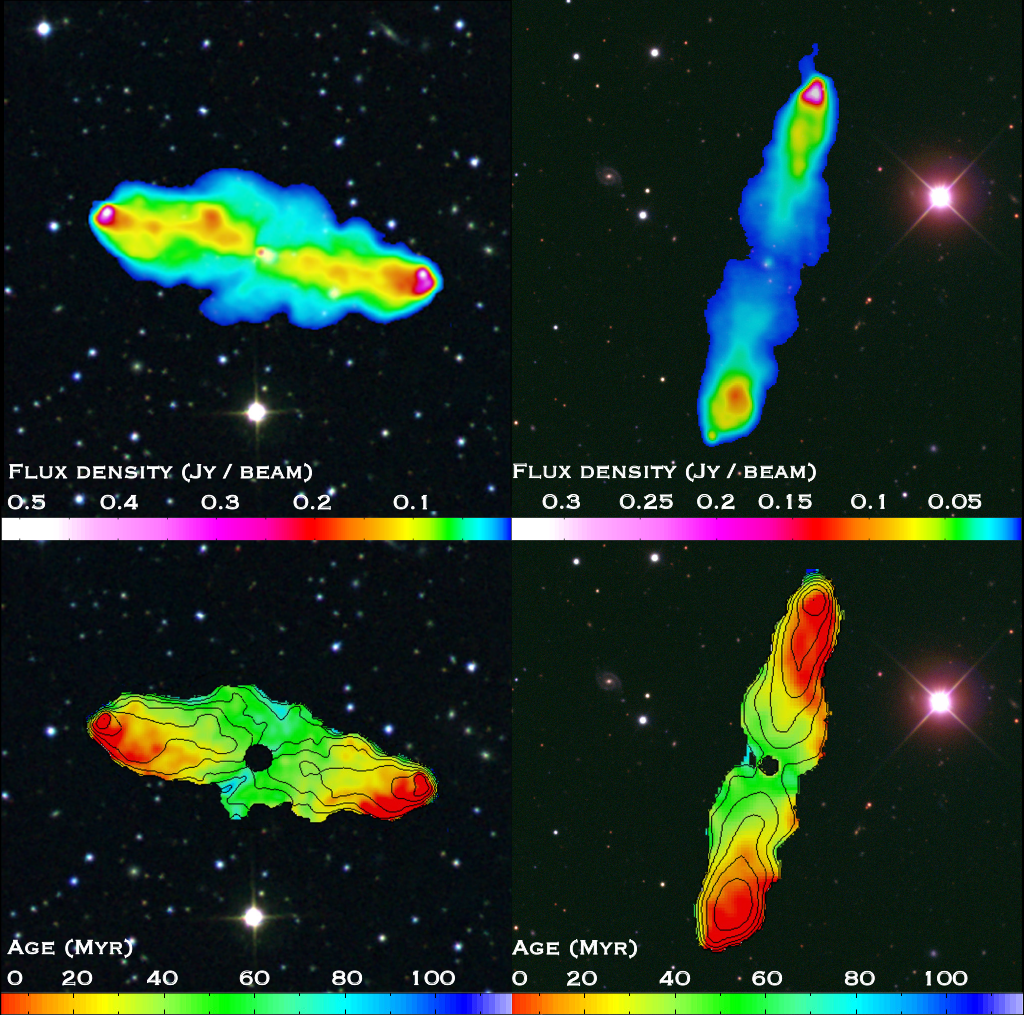Daily Image
20-12-2016The age, dynamics, and energetics of FR II radio galaxies
| Submitter: | Jeremy Harwood |
| Description: | Figure: Top: 368 MHz radio images of the FR II radio galaxies 3C452 (left) and 3C223 (right) overlaid on optical backgrounds. Bottom: The spectral age of each source as a function of position made using the Broadband Radio Astronomy ToolS (BRATS; http://www.askanastronomer.co.uk/brats ). Credit: Jeremy Harwood; Radio images: Harwood et al., 2016; Optical images: DSS/SDSS Radio galaxies, highly energetic structures which are observed on scales of anything up to a few million light years in size, are thought to be a key component in galaxy evolution by providing an injection of energy to the surrounding environment. However, limitations imposed by the old generation of radio telescopes have meant that the detailed spectra of these sources at low frequencies remains largely unexplored. Using the LOw Frequency ARray (LOFAR) and the Jansky Very Large Array (VLA) at frequencies between 50 and 460 MHz we have recently investigated the age, dynamics, energetics, and particle acceleration processes of two Fanaroff and Riley (1974) class II (FR II) radio galaxies. For the first time, these instruments have allowed us to undertake detailed studies of these powerful radio sources on small spatial scales at low frequencies and map the age and spectrum of the emission as a function of position. By placing tight constraints on the low-energy electron population, magnetic field strength, and total energy content of the radio galaxy's lobes we are able to better understand their life cycle, the total amount of energy they transfer to their environment, and the impact this has on the evolution of galaxies as a whole. |
| Copyright: | Jeremy Harwood |
| Tweet |  |
